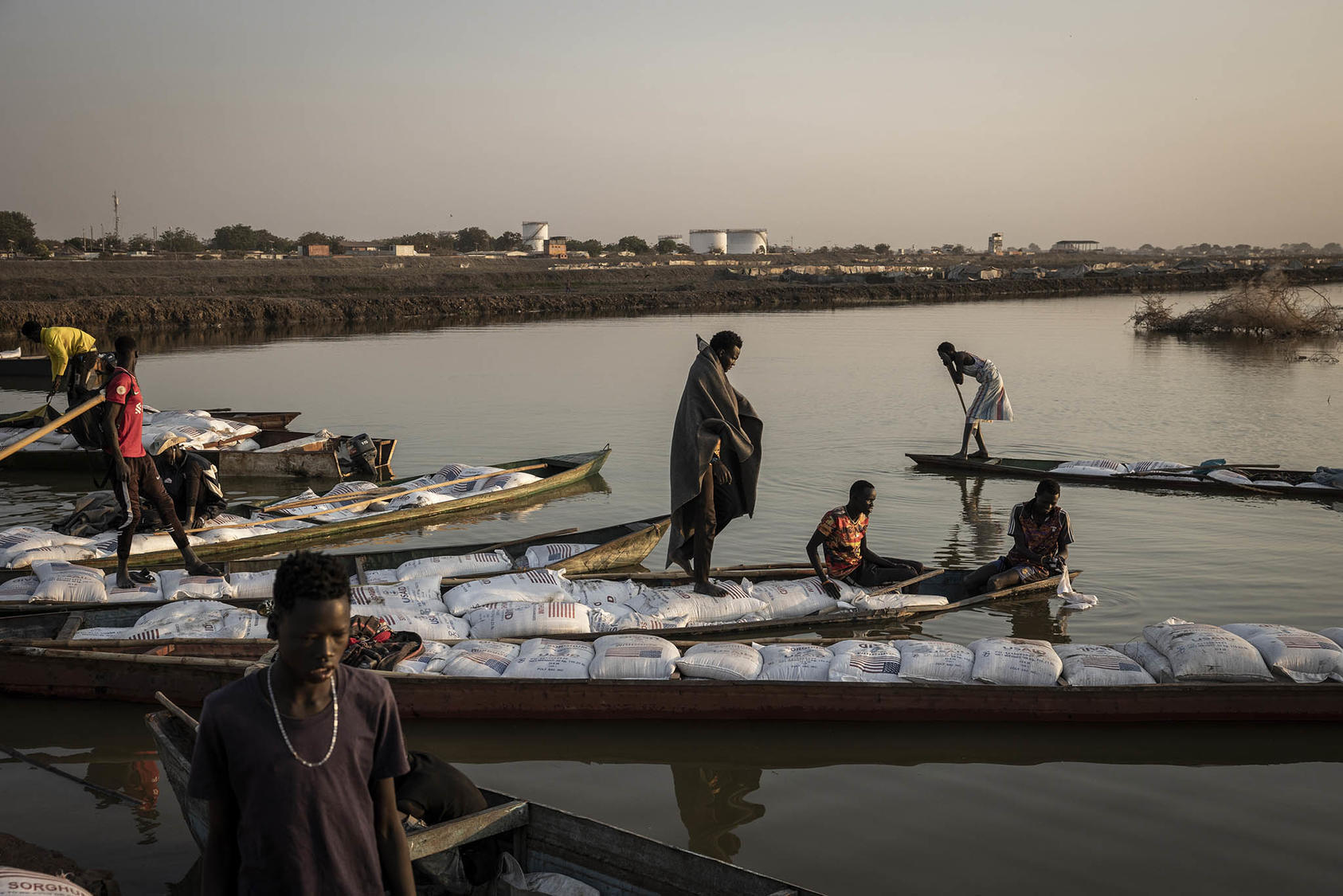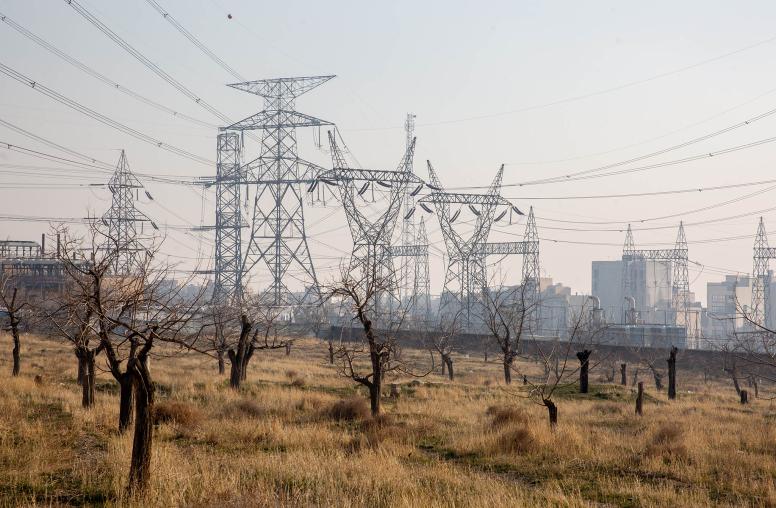Before the Next Shock, the World Needs a ‘Marshall Plan’ for Food Insecurity
As food, climate and security crises continue to intersect, the international community will need to reconsider how — and crucially when — it responds.
In recent years, the world has seen a host of interconnected challenges, with a crisis in one part of the world setting off epiphenomenal emergencies elsewhere. Russia’s invasion of Ukraine cut off many countries from their main supply of wheat and coarse grains, disrupting global food supply chains that were already stressed by the COVID pandemic. This led to further food insecurity in regions of the world, like East Africa, that were already dealing with starvation and malnutrition due, in part, to severe drought brought on by climate change. Meanwhile, in response to inflationary pressures — some of which derived from governments’ response to the pandemic — states around the world sought to tighten monetary policy by raising interest rates. Such financial measures added further burdens to developing countries struggling with high debt loads and currency devaluation.

We are in a dire state when it comes to global food security. “The world faces a global hunger crisis of unprecedented proportions,” according to the U.N. World Food Programme, with 345 million people in 82 countries experiencing acute food insecurity. Complex issues like global food insecurity, pandemics and climate shocks do not just pose humanitarian challenges — there are also vital peace and security interests at stake. Extremist groups recruit from the ranks of the poor, hungry and disadvantaged. Drought, famine and conflict over resources can drive people to flee their home countries, leading to migration crises that have innumerable downwind impacts.
As food, climate and security crises continue to emerge and intertwine, the international community will need to reconsider how — and crucially when — it responds. The days of “firefighting,” of addressing a crisis once it’s ablaze, should be put behind us, Arif Husain, the U.N. World Food Programme’s chief economist, said in an interview with USIP.
He believes that the international community must rethink its approach to hunger and security by getting ahead of the next crisis and building resilience in the world’s most vulnerable places. On the frontlines of hunger crises around the word, Husain said the cost of inaction is simply too high. “We can no longer look at hunger crises or conflicts across the globe as someone else’s problem,” Husain said. “The world is too interconnected.” What we need, is a “Marshall Plan for food insecurity,” he told USIP, harkening back to the post-World War II U.S. assistance program that helped rebuild Europe.
The following has been edited for concision and clarity.
Gallagher: Arif, we’ve talked before about how the nature of today’s challenges requires a wholesale rethink of how the international community approaches conflict. This is no easy task, especially considering the urgent needs facing those who are acutely hungry and malnourished. So, what’s the first step to alleviating these immediate needs?
Husain: First and foremost, we need to start by getting the problem statement right. Poverty is increasing; chronic and acute hunger are increasing; displacement is increasing. All these outcome indicators are moving in the same direction. Conflicts, climate and COVID are all explanatory factors behind these outcomes. But, for me on the economic side, I’m looking at the extremely high debt facing these countries, along with rising interest rates, soaring food prices and overall inflation, and devaluation of currencies. We are seeing this at a huge scale around the world, but particularly in Africa. In 2022, we saw the highest level of the Food Price Index, which captures international prices for commodities like grain and vegetable oil, since the U.N.’s Food and Agriculture Organization (FAO) began tracking in 1961.
Following Russia’s invasion of Ukraine, there has been a lot of thought put into arranging financing for these struggling countries. But the problem is that because of their debt levels, many of these countries do not qualify for facilities like the IMF’s Food Shock Window or other financing mechanisms. These countries do not have avenues for entering capital markets. So, what can be done for these countries?
Increasingly, the international community is considering debt relief for countries impacted by climate change. We need to have something similar for countries facing hunger challenges — meaning debt relief for hunger relief. For these countries with unsustainable debt that don’t qualify for traditional financing mechanisms, we need to consider debt relief to enable them to purchase food and fertilizer. Simply put, if you happen to be a poor country that imports its food, fuel and fertilizer, that struggles with a weakening currency and a high debt burden, you’re in a lot of trouble right now. And there are dozens of countries which fall into this category. So, instead of making your debt payments in foreign exchange, you use the same foreign exchange to buy food and fertilizer. This can help to bring down food inflation for a poor country and also helps to ensure availability for the next year.
Last fall, the IMF identified 48 countries who were worst hit by the food shock brought on by Russia’s invasion. These countries, the overwhelming majority of which are in Africa, are heavily dependent on food imports from Ukraine and Russia. The IMF estimates that “the impact of higher import costs for food and fertilizer for countries highly exposed to food insecurity will add $9 billion to their balance of payments pressures.”
These countries need help. If we can have rescheduled debt payments during COVID or debt relief for climate change, there’s no reason to not do the same for food insecurity. But I am not saying that the international community should just provide “free money” — there must be some conditionality. Recipient governments must spend the money solely for the purposes of social protection, like importing food or fertilizer. Debt swaps can be employed as well, with the requirement that the funds used to service debt instead are invested in development work. Aid governments and agencies can closely track this to ensure these funds are not being used for other purposes.
Gallagher: So, that’s what we can do now in the midst of this current crisis. The big question is how to prepare for the next shock. We know that these events — like the earthquakes that recently hit Turkey and Syria — are largely unpredictable. How can the international community build global resilience to prepare for the next shock?
Husain: Let me start by saying something somewhat counterintuitive for someone who works at the World Food Programme (WFP). Aid is not the solution — international assistance is how we stave off worst-case scenarios. In the long run, we need something much more holistic that fundamentally alters the architecture of the global food system. I’m talking about agricultural diversification, labor force preparation, debt relief for hunger relief and other structurally focused initiatives.
Every crisis also brings opportunity with it. In fact, given the dire state of global hunger today, the international community is more likely to listen and be open to new, innovative ways to build the kind of resilience you’re talking about. At the same time, we’ve seen that as some of these pressures have started to lessen, leaders and policymakers take their eye off the ball.
So, what do we need? I would argue that the world needs a Marshall Plan for food security. After the devastation wrought by World War II, the United States provided $12 billion (equivalent to nearly $1.5 trillion today) in funding to help rebuild Western Europe. Within three decades, France, Germany, Italy and the United Kingdom had rebounded as economic powerhouses.
Right now, the biggest hurdle which I see looking ahead is on the labor side. There are about 500 million people who are going to enter the labor force within the next seven to eight years. You're not talking decades — you're talking years. We know that many countries earned their development dollars in the past by using labor intensive technologies. But now automation is fast replacing such labor-intensive jobs, which means that poor and developing countries must quickly re-engineer their labor force to the fullest extent, and that must include women's empowerment. You can’t ignore half your population when it comes to development.
I’ve already talked about exchanging debt relief for hunger relief, which could make a huge difference. Another option is to find ways to get money into the hands of the people who need it. Whether it's tax credits, universal basic income, direct cash transfers — these things have been shown over and over again to be the quickest way to alleviate poverty.
Investing in agricultural sectors and diversified sources of food security that can weather disruptions from one source more readily could be a gamechanger. The war in Ukraine has shown us how the extreme concentration of global food market supplies and reserves can quickly cause major problems. Before the war, seven countries accounted for 86% of wheat exports, while only three countries held 68% of world wheat reserves. This is very precarious.
Lastly, invest in children. In our research, we say that if a child is not well nourished within the first 1,000 days, they never gain — or they almost never gain — their full productive potential.
These are tried-and-true strategies. If you look at countries that have beaten poverty, where they've beaten hunger, whether after World War II with the Marshall Plan or even South Korea or Rwanda more recently, we have the recipe. We know what needs to be done. I will go as far as to say that we also have the money to do it. But why doesn't it happen?
In the simplest of terms, it’s that we don't stay the course. The problem is that our decision makers’ window of action is always about the short-term gains — they worry about getting elected or re-elected, and their timeline for action is based on that. Many of the things we are talking about — like diversification of your export base for food and commodities or your energy base — these are not new issues. We saw them in 2007 and 2008. But they never got solved. Why not? Because we don't stay the course. And until we do that we are always going to be in a position where we are at risk for the next shock.
We also need to stress that these shocks now have global repercussions. Too often, the first question policymakers ask is “How much is it going to cost?” We need to turn that question on its head. Instead, we should start with “What is it going to cost if we don't do it?” If the answer alarms you, then you better fix it now.
And it's not just an actual cost, there are political costs as well. Governments might not see it as a pressing issue, but they should go ask their people if these problems can wait. This is not only about moral action, or about being a good humanitarian. This is an economic and political imperative, a necessary action with consequences for not doing it.
How much would a food insecurity-focused Marshall Plan cost? To end global hunger by 2030, one study — based on the 2020 estimate of hunger projection — has found that international community would need to invest $39-50 billion a year through 2030.
One last thing I want to point out is that United States has been a global leader and delivered when it comes to food assistance. Of the roughly $14.2 billion in contributions we received at WFP in 2022, $7.2 billion came from the United States. Meanwhile, Gulf countries and other major oil producers were bringing in windfall profits, but providing very little aid or support, at least when it comes to food security. If the Gulf countries could step up and even focus on the food crises in their own region, it would make a big difference. So, if there’s more that Washington can do, it might be encouraging its Gulf allies to step up on this issue.
Gallagher: To a lot of practitioners and policymakers, the prescriptions you offer above may seem daunting amid the host of vexing challenges the international community faces today. But as we have seen in recent years, food security crises don’t happen in a vacuum and they aren’t localized. They have major peace and security implications for not only the regions they happen in, but around the world. Why is it so vital that the international community focus on building resilience in the global food system?
Husain: That’s exactly right. I would urge all interested actors to consider the cost of inaction, because, frankly, that cost is a lot higher than a Marshall Plan for food insecurity. In a previous article for USIP, I wrote about Syria’s civil war and its impact on Europe. There are two big takeaways from that story. First, a problem in one part of the world is a problem for all of us. That may have been less tangible back in 2011 when Syria’s civil war erupted — but today I think it’s something we should all understand. The COVID pandemic and the war in Ukraine have really brought that lesson home. The second lesson is that early investment in prevention is much less costly than addressing a crisis once it’s hit your own shores or borders.
One of the biggest instigators of violence around the world is hunger. When people don’t have any options, when they see their children hungry and sick, they can’t accept it. This isn’t about ideology — it’s about poverty and hunger. All around the world, conflict and hunger are inextricably linked. Not only does hunger drive conflict, but violence and wars often lead to hunger. It’s a vicious cycle: Look at Afghanistan, Yemen and Syria, countries that have been mired in conflict for years and are facing dire food security situations. Seven out of 10 major food crises in the world are driven by conflict.
Sub-Saharan Africa, which deals with more hunger challenges than any part of the world, is perhaps the most illustrative example. Indeed, of the 19 countries that WFP and FAO have labeled as hunger hotspots, eight are in sub-Saharan Africa. Not only does this food insecurity lead to dismal health and education outcomes, it also breeds violence. In 2021, nearly half of all the deaths in the world from violent extremism occurred in sub-Saharan Africa. Is it any surprise that the hungriest region of the world also faces the biggest challenge from terrorism?
We all know about the dangers associated with terrorism. But this isn’t the only way that hunger can breed threats to global security. Think about a struggling country like Pakistan — that has nuclear weapons. Of course, Pakistan already faces immense challenges from terrorism. It has also been battered by climate disasters in recent years.
By the end of this month, it looks like approximately 5 million Pakistanis will be near famine levels of hunger. That is very destabilizing in its own right, particularly coupled with the climate challenges facing the country. But on top of all that, the country’s politics are in turmoil and its economy and finances are teetering on the brink of collapse. And this is all happening in a country with nuclear weapons that borders a nuclear-armed archrival, India. This is a recipe for disaster. Addressing Pakistan’s hunger issue won’t solve all its problems, but it will help provide some stability amid a tense situation.
So, a Marshall Plan for food insecurity may seem like an overambitious pipe dream, a bleeding-heart idea about how to solve hunger. But this is just as much about dollars and cents, and realism. It’s about national security, too.
The world has rightly rallied around Ukraine to support its fight against Russia’s illegal invasion. Why? Well, in some ways you could argue that it’s a preventive measure, right? Along with supporting Ukrainian partners, the United States and Europe also want to deter the next would-be aggressor.
We need to think about hunger in the same way. After all, a less hungry world is a less violent and more stable world.



